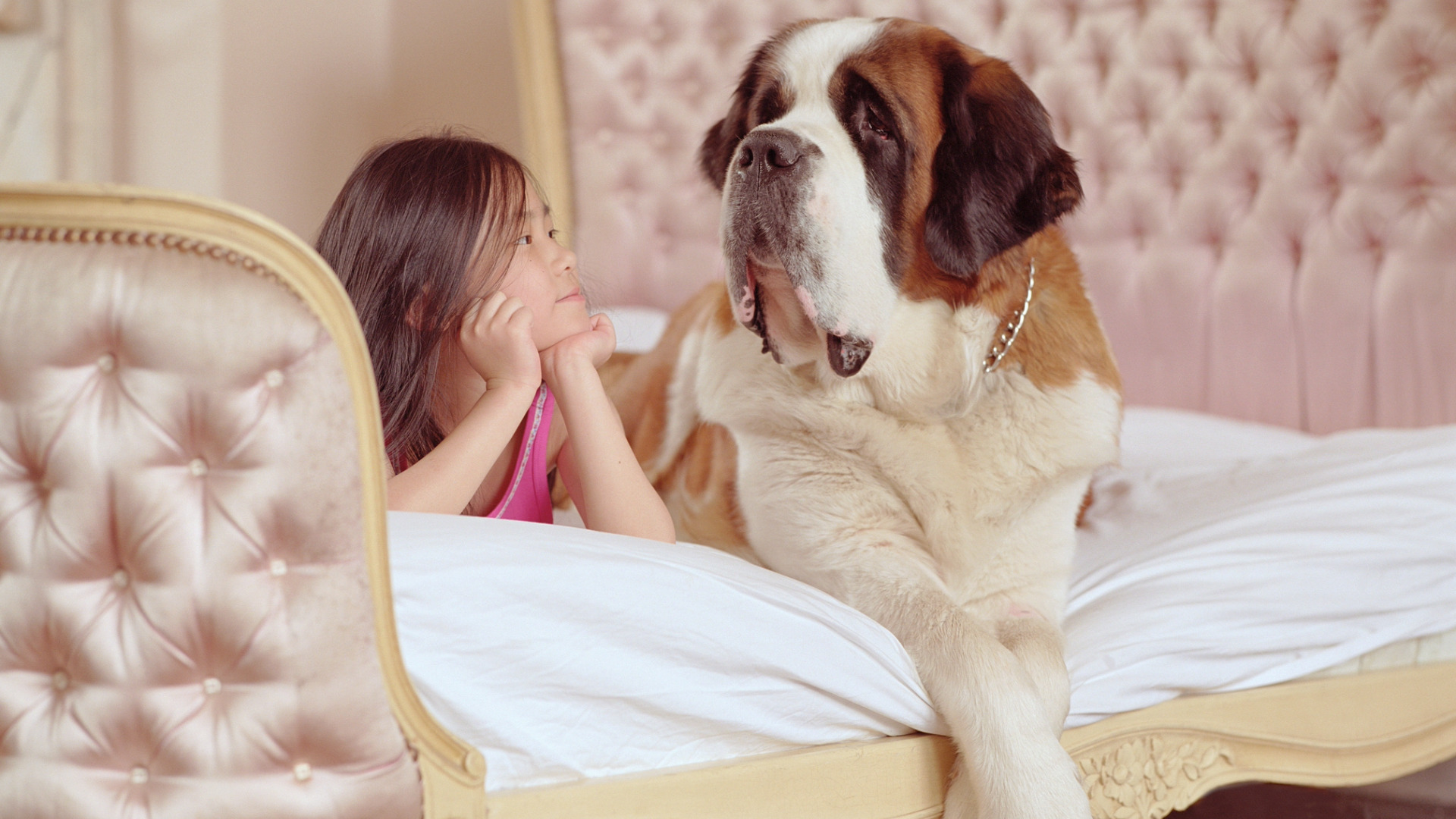
Accepted as an official breed by the American Kennel Club (AKC) in 1885, the giant, loving, and loyal Saint Bernard became the most popular dog in the country by the 1890s. While this gentle giant hasn’t garnered as much widespread popularity since the early days of the breed’s recognition in the U.S., the Saint Bernard is still a much beloved pooch.
They're an especially wonderful family pet and are well-loved for their gentleness with children and other animals. All they ask for in return is some of the best dog food, and maybe one of the best large dog beds.
With their incredible appearance, loving nature, move star status, and history as search and rescue dogs, there are numerous reasons to love St. Bernards. Below, we'll take a look at some of the top reasons why we can't get enough of these gentle giants.
32 reasons to love St. Bernards
1. The Saint Bernard is a giant breed
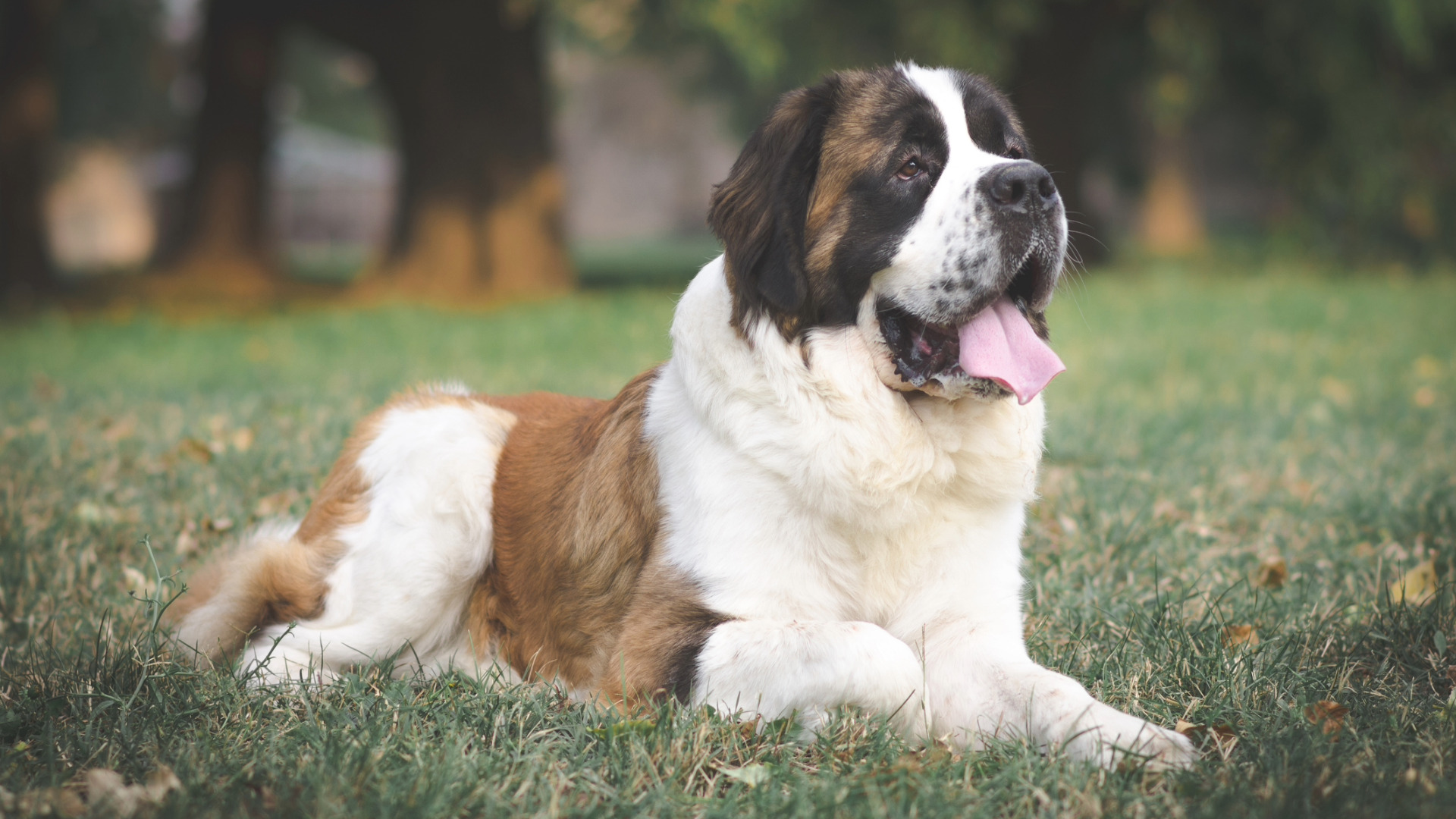
Most kennel clubs recognize only about 16 giant dog breeds out of hundreds. The fact that this gentle giant is one of the largest dog breeds in the world is certainly one of the many reasons to love St. Bernards. Although there is not one official standard for classification, dogs with healthy adult weights that commonly exceed 90 or 100 pounds are typically considered giant breeds. When fully grown, the average Saint Bernard can weigh between 120-200 pounds. Like most giant breeds, they also have a shorter lifespan which averages 8-10 years.
2. They're rare to come across
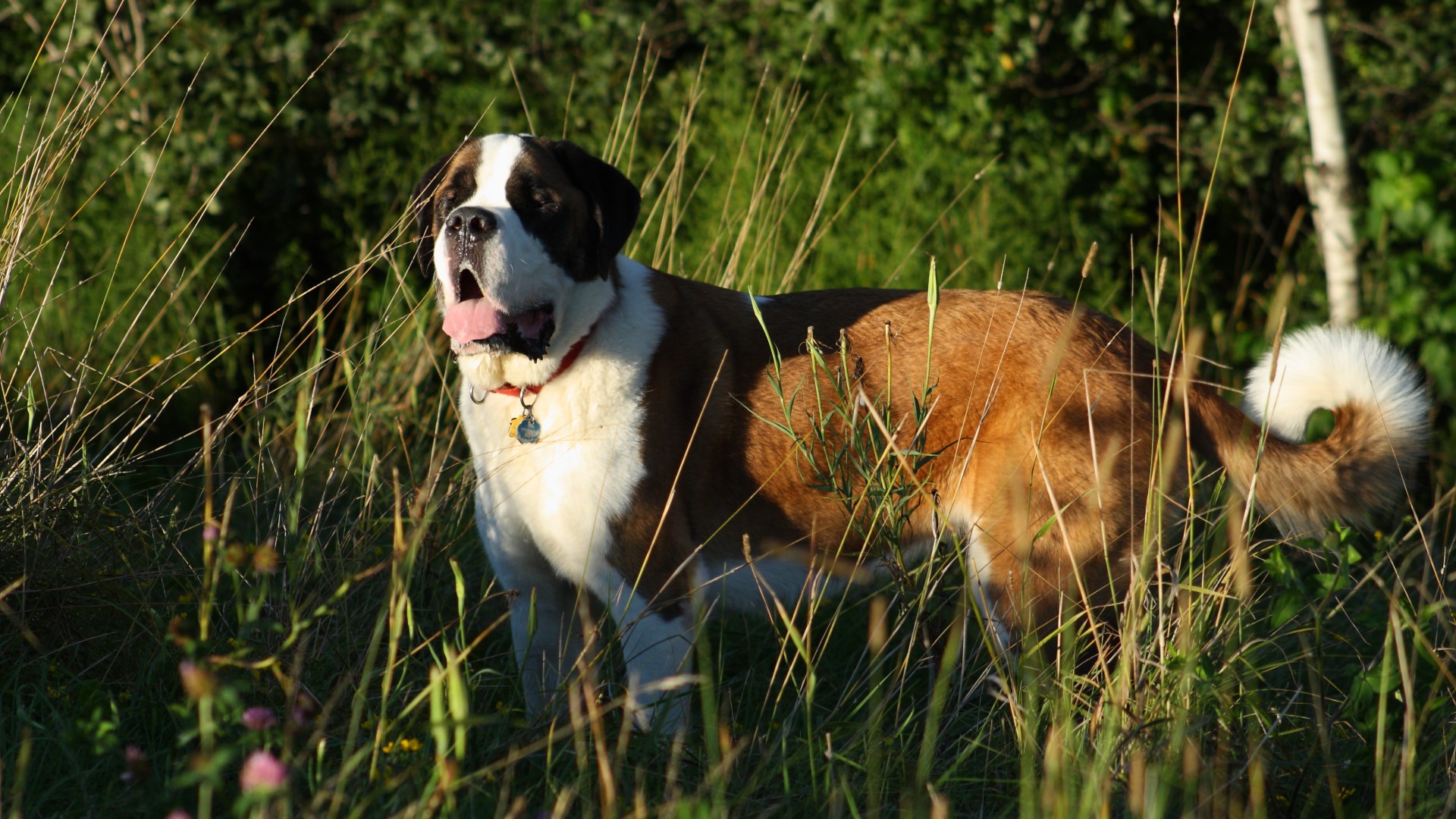
While they are a beloved breed, Bernies aren’t a common sight. Most dog guardians opt to adopt smaller breeds into their homes, often due to logistical constraints. Giant breeds require more space, have more costly food and vet expenses, and can be more difficult to transport due to their size. So when you get to come across a Saint Bernard in public, it can feel really special. How often do you get to see a 120-pound or heavier pooch with a massive head stroll on by?
3. The Saint Bernard is the star of the Beethoven movies

Not many dog breeds have a series of eight feature films associated with them. For folks who were kids or parents of young kiddos in the 90s and early 2000s, the Beethoven movies helped the lovable, goofy, and albeit slobbery, Saint Bernard capture the hearts of thousands of viewers. The original canine star of the first two Beethoven movies was a 200-pound Saint Bernard named Kris, although he had at least eight doggie doubles.
4. They have a great breed name
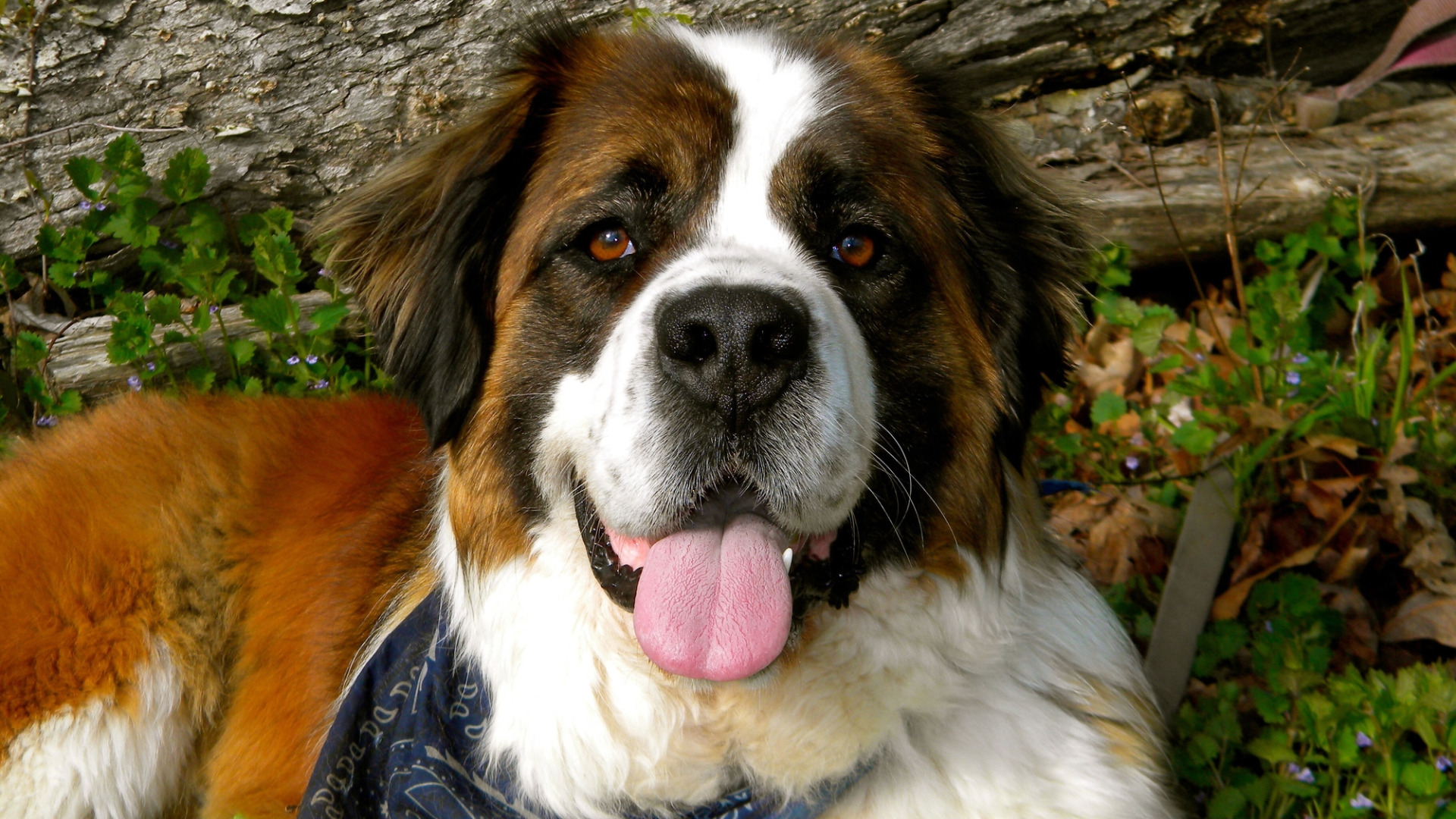
If you're drawn to regal-sounding names, the Saint Bernard will certainly delight. This breed’s name originates from what is currently the third-highest road pass in the Western Alps of Switzerland- the Great Saint Bernard Pass. In the 11th century, a monk named Bernard of Menthon established what is now known as the Hospice of Saint Bernard along the Pass to aid travelers. From this remote alpine refuge, the magnificent Saint Bernard breed originated. Some people also affectionately call them “Saints” or “Bernies”.
5. History as search and rescue dogs
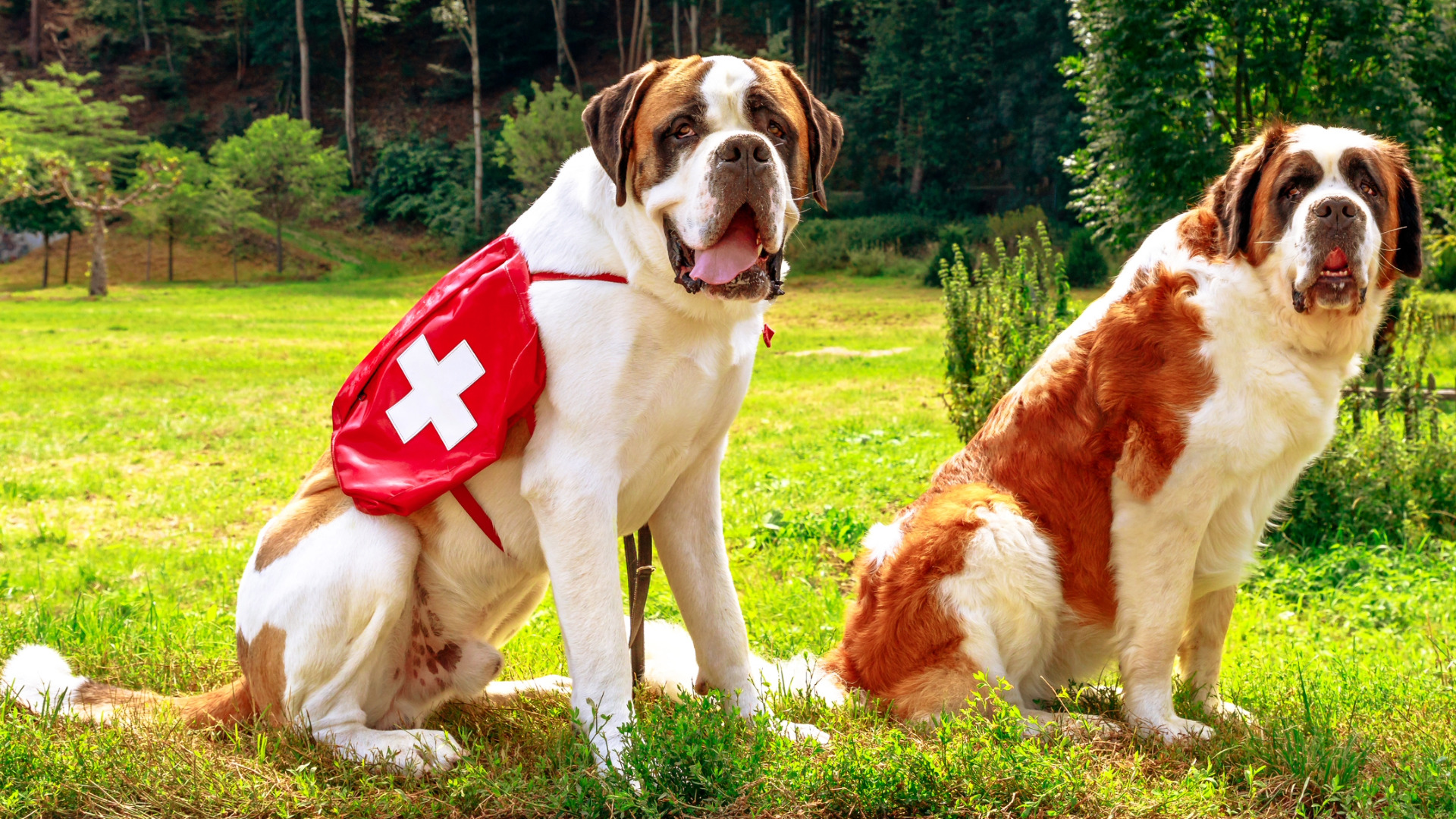
According to the Saint Bernard Club of America, beginning around 1700, monks at the Hospice of Saint Bernard bred, trained, and employed Saint Bernards as search and rescue dogs. These powerful, but gentle pooches carried supplies and sniffed out and rescued travelers who were trapped by avalanches or in danger of succumbing to the brutally cold climate of the Swiss Alps. Today, these heroic pooches are no longer bred as rescue dogs, and instead are beloved family pets and therapy dogs.
6. Saint Bernards are the best snugglers
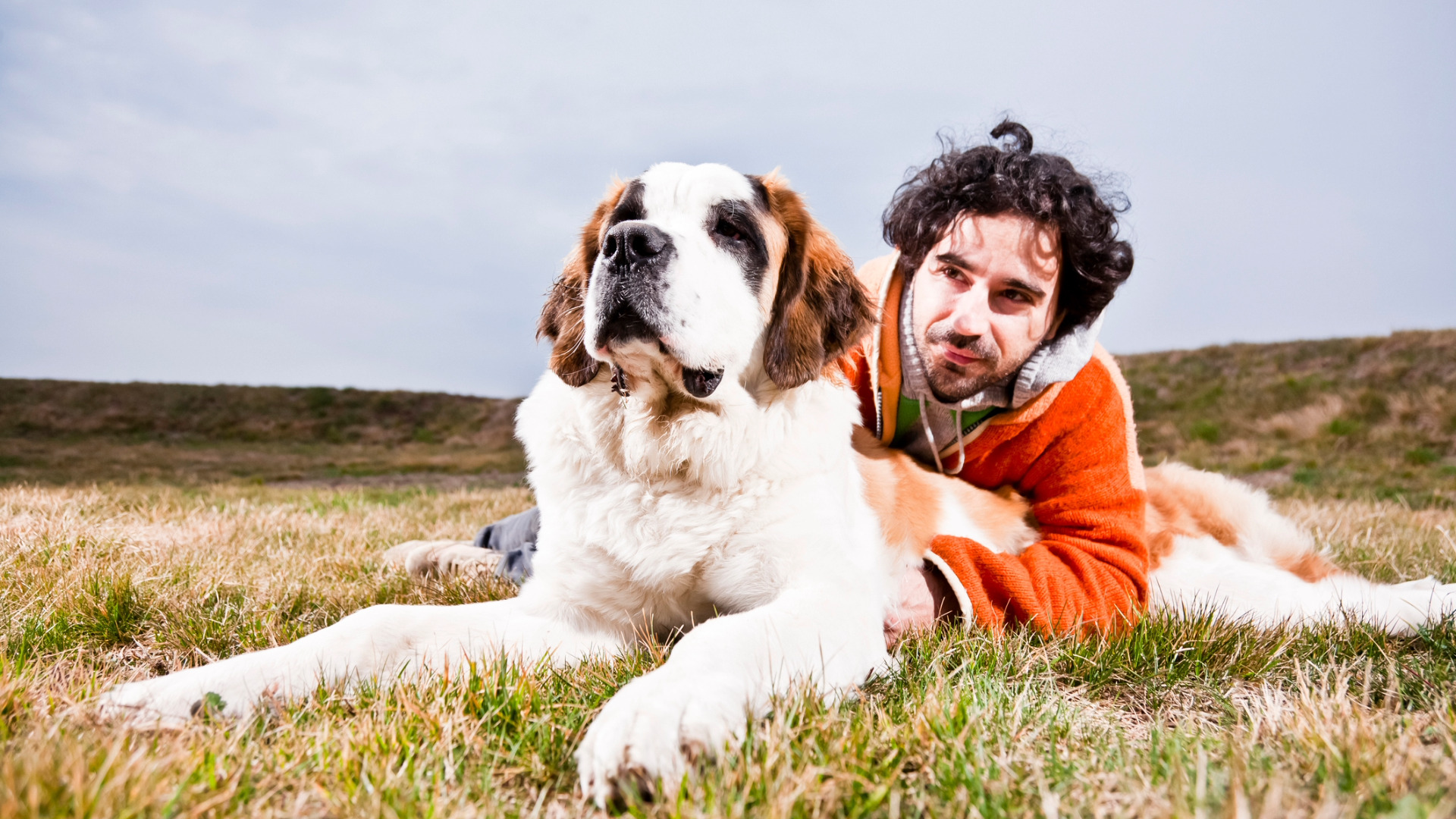
If you love snuggling and giant doggos, look no further than the affectionate and snuggly Saint Bernard. While these giant teddy bears can sometimes be a bit timid of strangers, once you gain their trust they tend to love cuddling up with their human pals.
Of course, it's important to make sure your canine friend is comfortable with snuggles. Yawning, wide eyes, lip licking, leaning away, and a tense body are signs they are likely feeling anxious. Relaxed body language, leaning into you, and a lack of tension in the face can indicate comfort.
7. They're wonderfully fluffy
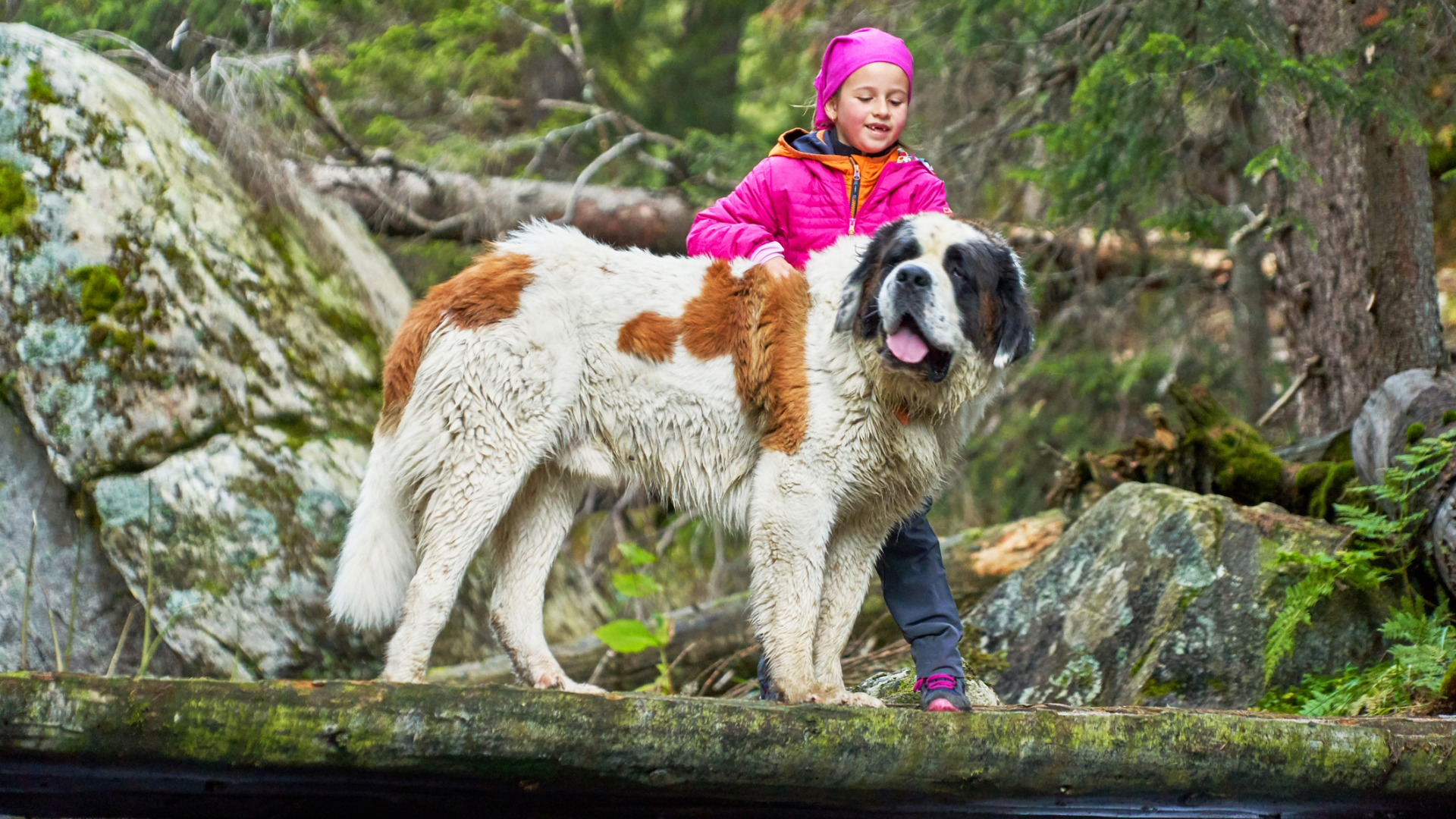
The Saint Bernard is easily in the top three for the fluffiest giant breed dogs, which means you'll need one of the best dog brushes to keep up with all their fluff. However, they didn’t always have such a luxurious coat. In the late 1800s, after a series of particularly harsh winters led to the death of several dogs at the Hospice of Saint Bernard, the monks introduced Newfoundlands into the breeding stock to produce a thicker-coated Saint Bernard.
They did succeed in producing the thick-furred coat we know today, but the result actually back-fired as the long hair led to their coats becoming weighed down with ice.
8. Saint Bernards are super gentle
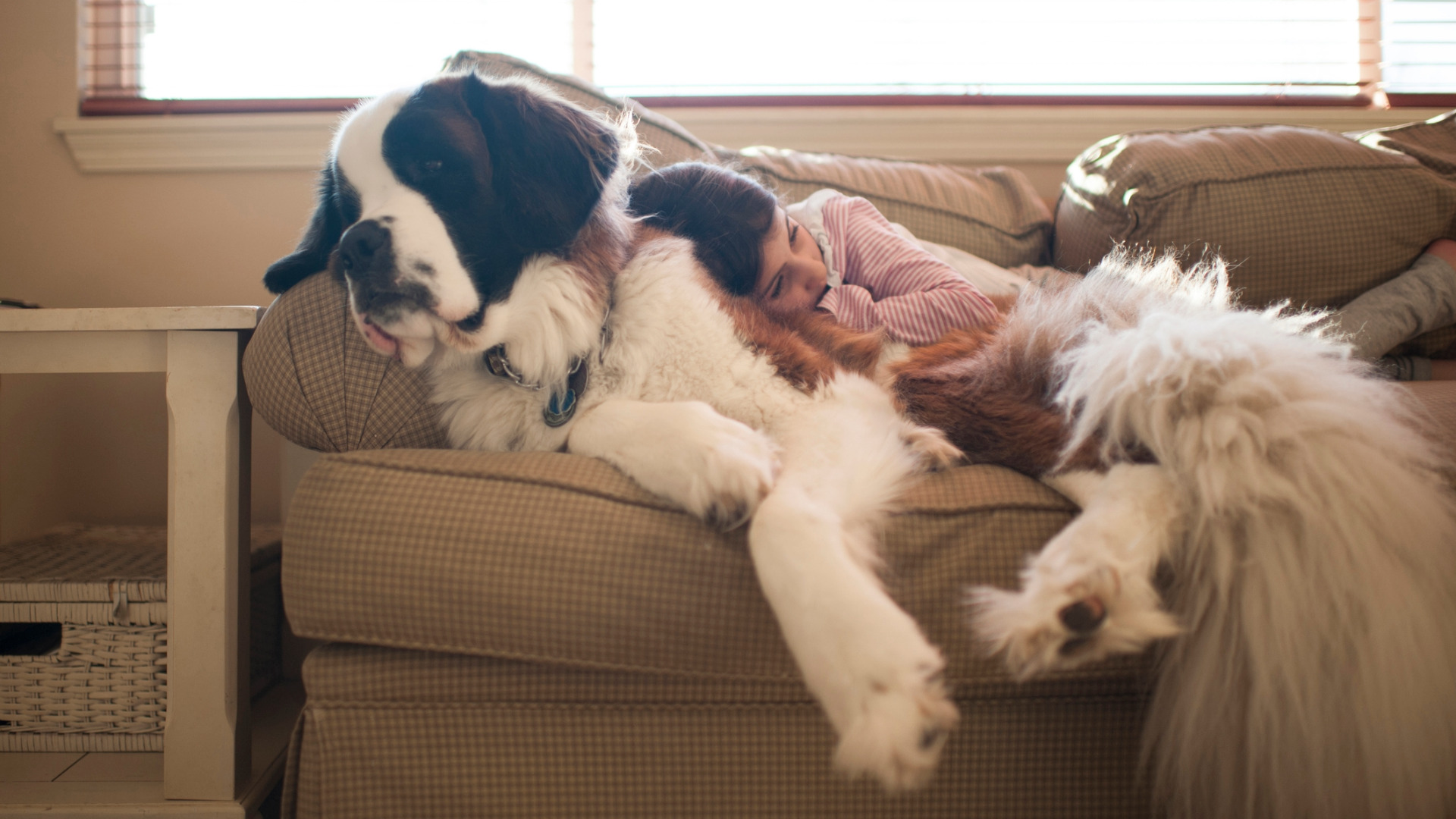
Known as gentle giants, Saint Bernards are well-loved for their typically docile temperament. This tendency to be friendly in a gentle, lower-energy way makes them excellent family pets. Like all pups, however, they do require consistent, positive socialization to a range of new experiences during puppyhood to become confident adults. Of course, using positive reinforcement with the best dog treats always helps!
But as a general breed standard, Bernies aren't known for being high-strung or rambunctious. This docile nature is also emphasized in historical accounts of their time as search and rescue dogs.
9. They're conversation starters

If you’ve ever walked a Saint Bernard in public or taken them to a park, you’re probably familiar with how much of a conversation starter they are. For someone who wants to engage with others but isn’t sure how to begin a conversation, having one of these massive pups by your side can definitely help break the ice.
Many people are fascinated by giant breed dogs, and if you head to a park with well-socialized Saint Bernard there's a good chance fans of the breed will want to approach and make introductions.
10. Saint Bernards are popular therapy dogs

While they are no longer used as search and rescue pooches, Saint Bernards are quite popular as therapy dogs. This is due to their docile nature, tendency to remain level-headed, low energy, friendliness, and emotional intelligence. As therapy dogs, they visit locations such as hospitals, schools, and nursing homes to provide joy and comfort. Their size allows them to walk right up to a hospital bed and nuzzle their head into a resident's arms.
11. Their size offers protection on walks
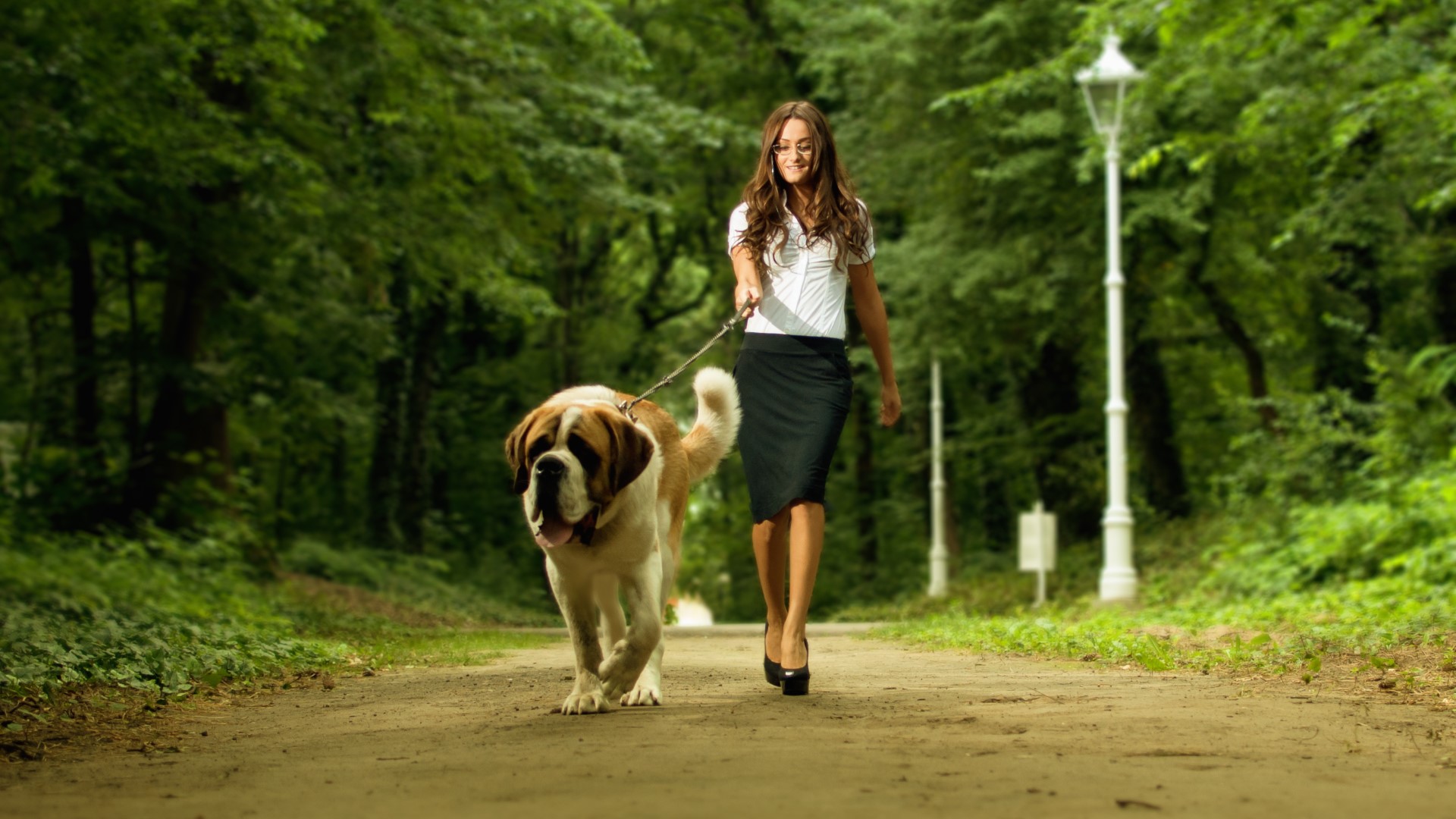
Even though they’re known for being gentle giants, Saint Bernards are still physically imposing doggos. While they may not be one of the best guard dog breeds, their massive appearance alone may offer protection against possible aggressors while you’re out and about.
Someone with ill intent would likely think twice about approaching someone with a 120-pound or heavier pooch cruising along next to them. While we don't recommend actively using your dog as a bodyguard, having a Saint Bernard by your side can provide additional peace of mind as you navigate the world.
12. Heroic legacy
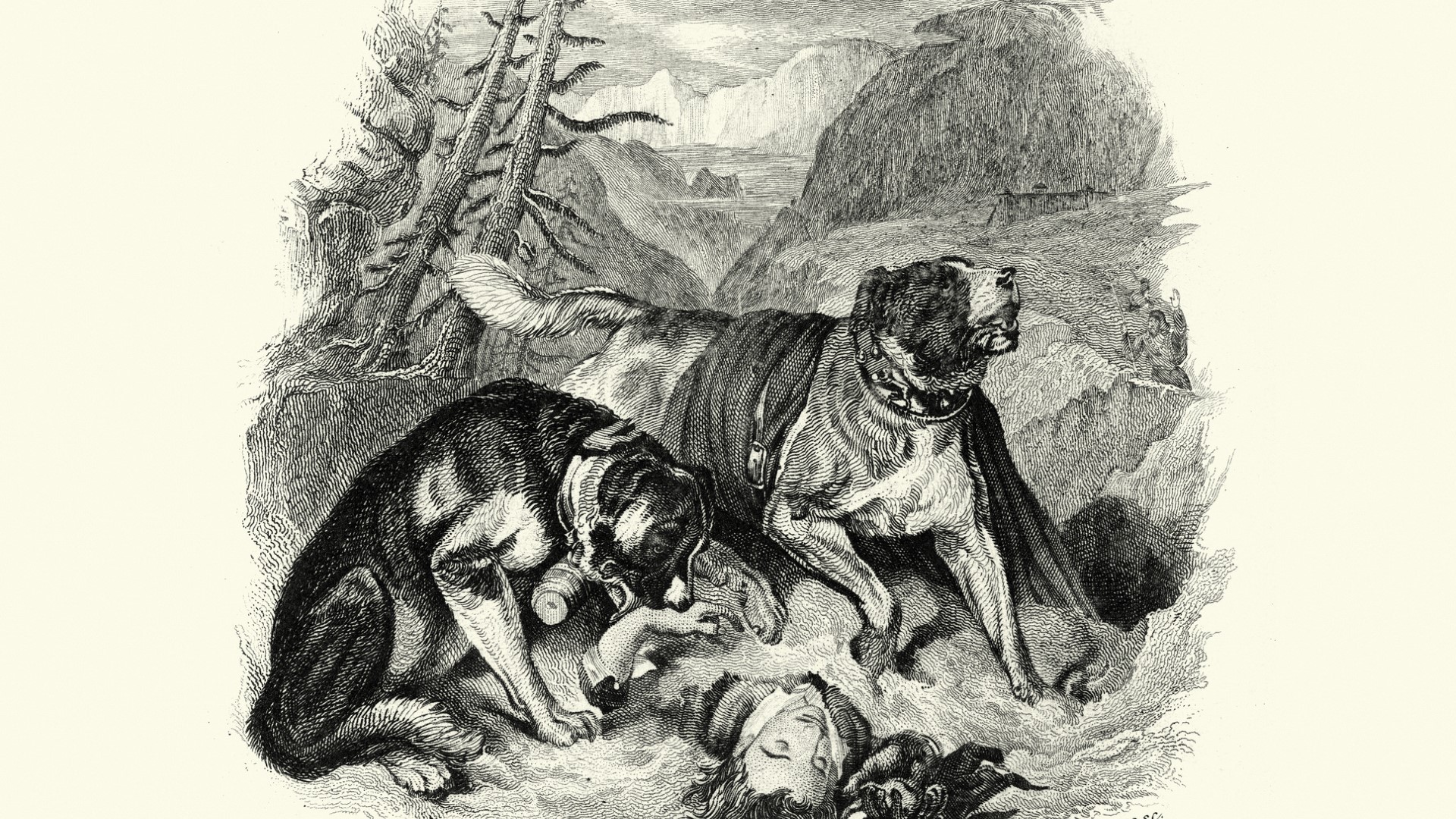
Perhaps the most famous search and rescue Saint Bernard of the Swiss Alps was Barry, a pooch who may have saved over 40 people throughout his 12 years as a rescue dog from 1800-1812. The stories around Barry seem to be a mixture of fact and fable, with some accounts claiming the heroic pup rescued upwards of 100 people from succumbing to an icy death in the Swiss Alps. Whatever the true number was, we do know Barry was a prolific rescuer who left such a lasting impression that an old regional name for the Saint Bernard was “Barryhund”.
13. They're adaptable

Some pups have a hard time adjusting to new routines, and deviations from the norm can be quite anxiety-inducing for them. A well-socialized Saint Bernard, however, typically handles changes in routine with relative ease. This trait is part of what makes them excellent assistance and therapy dogs. To thrive as a therapy dog, a Saint Bernard needs to feel comfortable with meeting new people, navigating public spaces, and entering various buildings.
14. Saint Bernards are a lovable heater
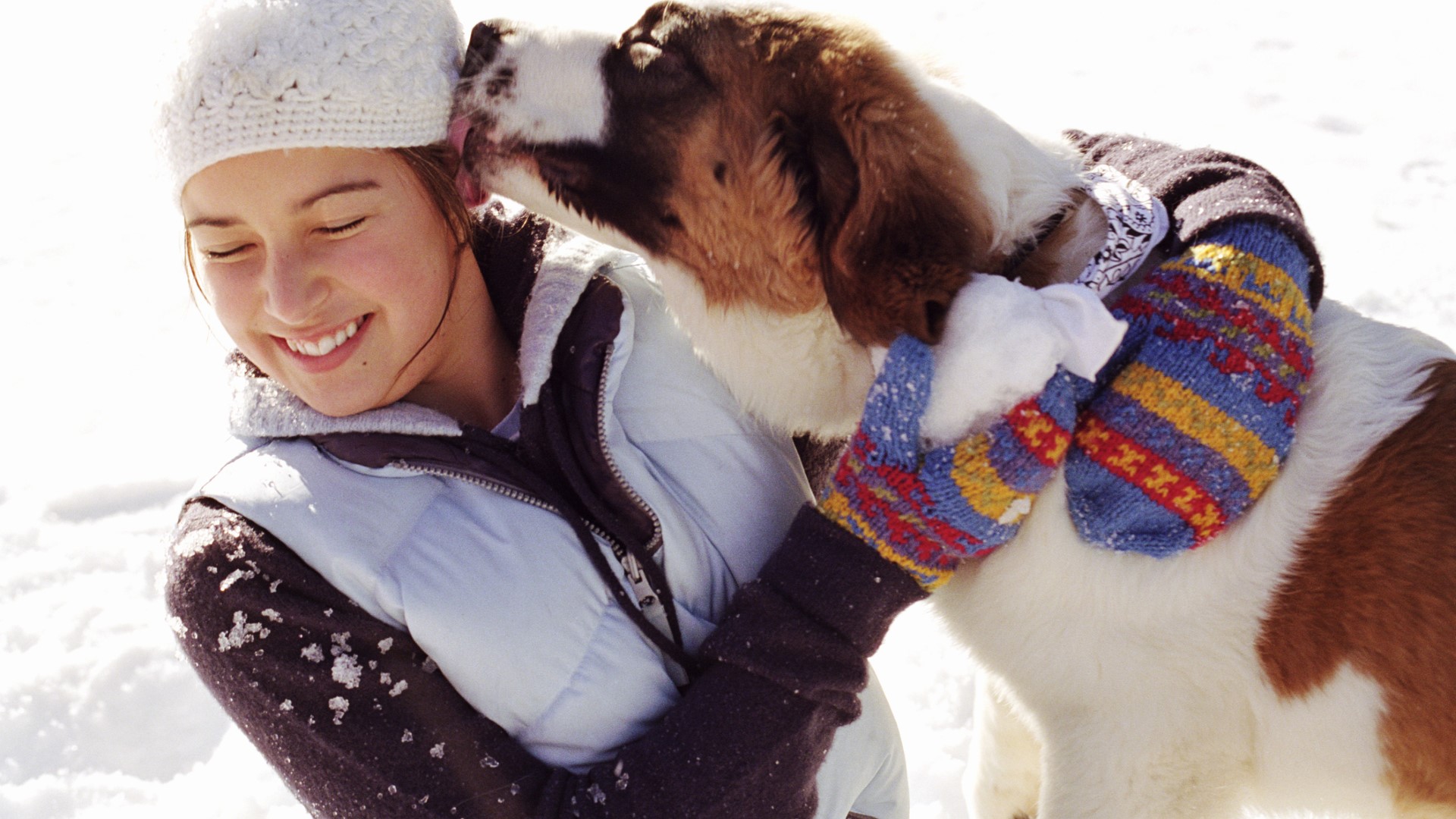
As one of the best dog breeds for cold climates, the Saint Bernard thrives in cold environments with their impressive stature and thick double coat. If you’re feeling a bit chilled during or after a cold-weather outing, having a thick-coated Saint Bernard by your side can help you quickly warm up.
A dog's normal body temperature, at 100.9-102.4 degrees Fahrenheit, is already higher than our normal temp range. So snuggling up to a giant, thick-coated dog when you're cold is like cozying up to a lovable, fluffy heater.
15. They can carry snacks on a hike
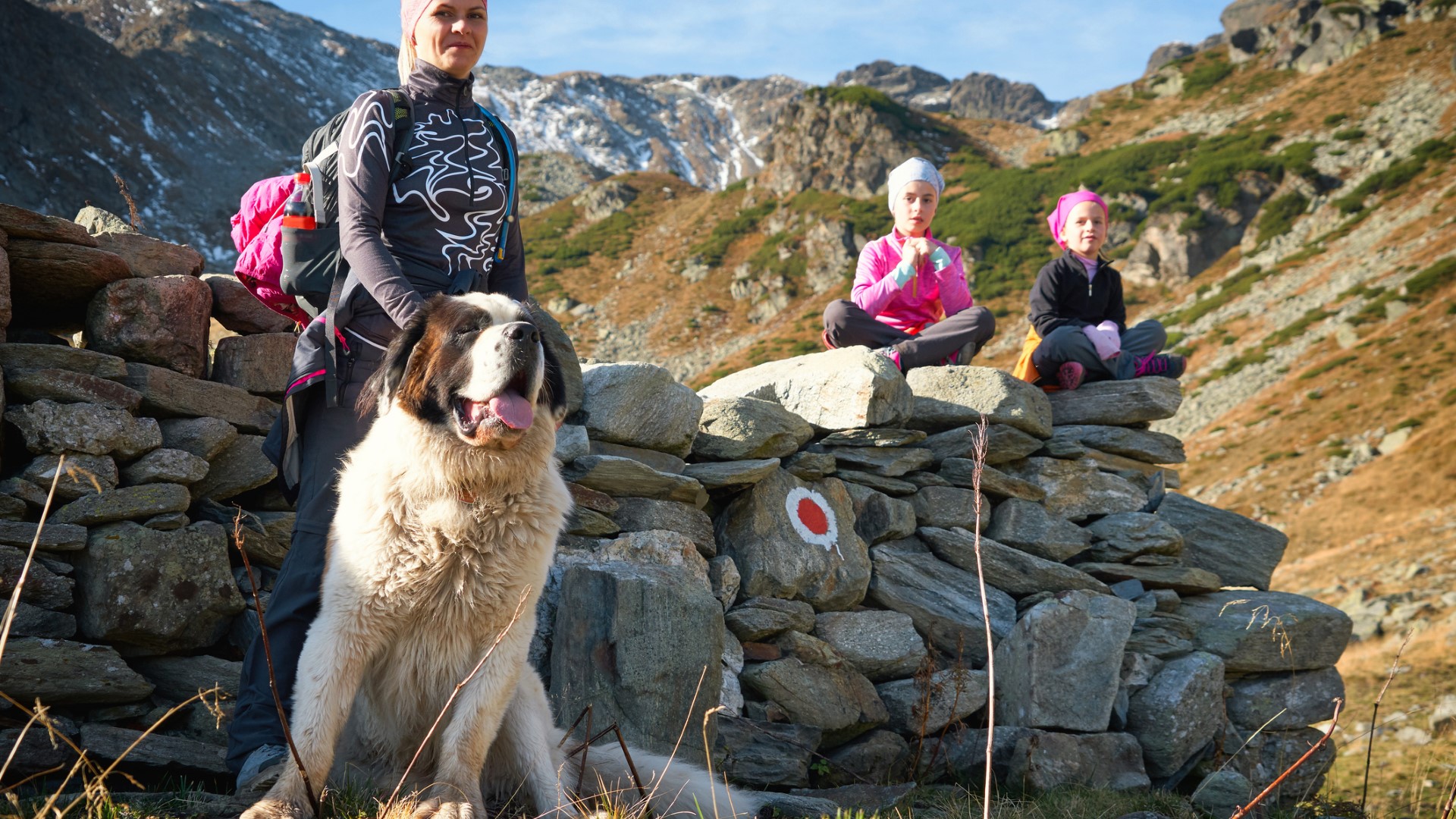
For hundreds of years, monks packed supplies of food and water on Saint Bernards to carry on rescue missions. As long as they are gently habituated to and comfortable wearing a pack, these powerful dogs will likely have no problem carrying snacks, water, and tasty dog treats on a hike. Just remember these pups and the heat do not play well together. It’s best to go on cool or cold-weather adventures with this breed.
16. They will play with you in the snow
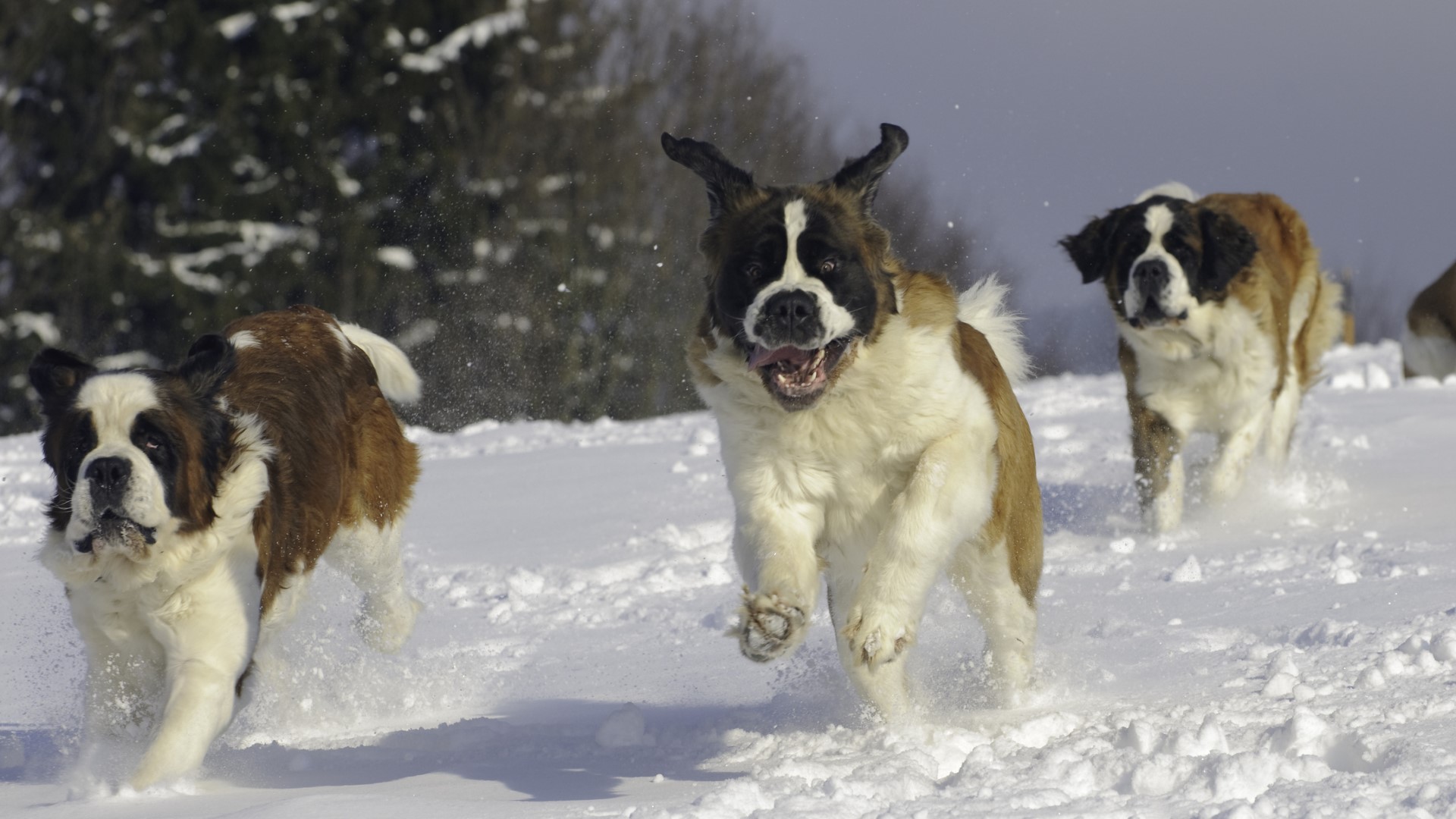
If you're interested in winter activities for dogs, the Saint Bernard is certainly a top contender for the best dog breeds to play in the snow with. While some pups, like the short-coated Staffordshire terrier, are not cut out for the cold, these mini horse-sized pooches are typically more than willing to accompany you for a romp in the snow. Some Bernies are also intuitively interested in digging in the snow. If their coat starts to get noticeably wet and heavy, however, it's best to head inside for a while to dry off and warm up.
17. They're affectionate, but not demanding
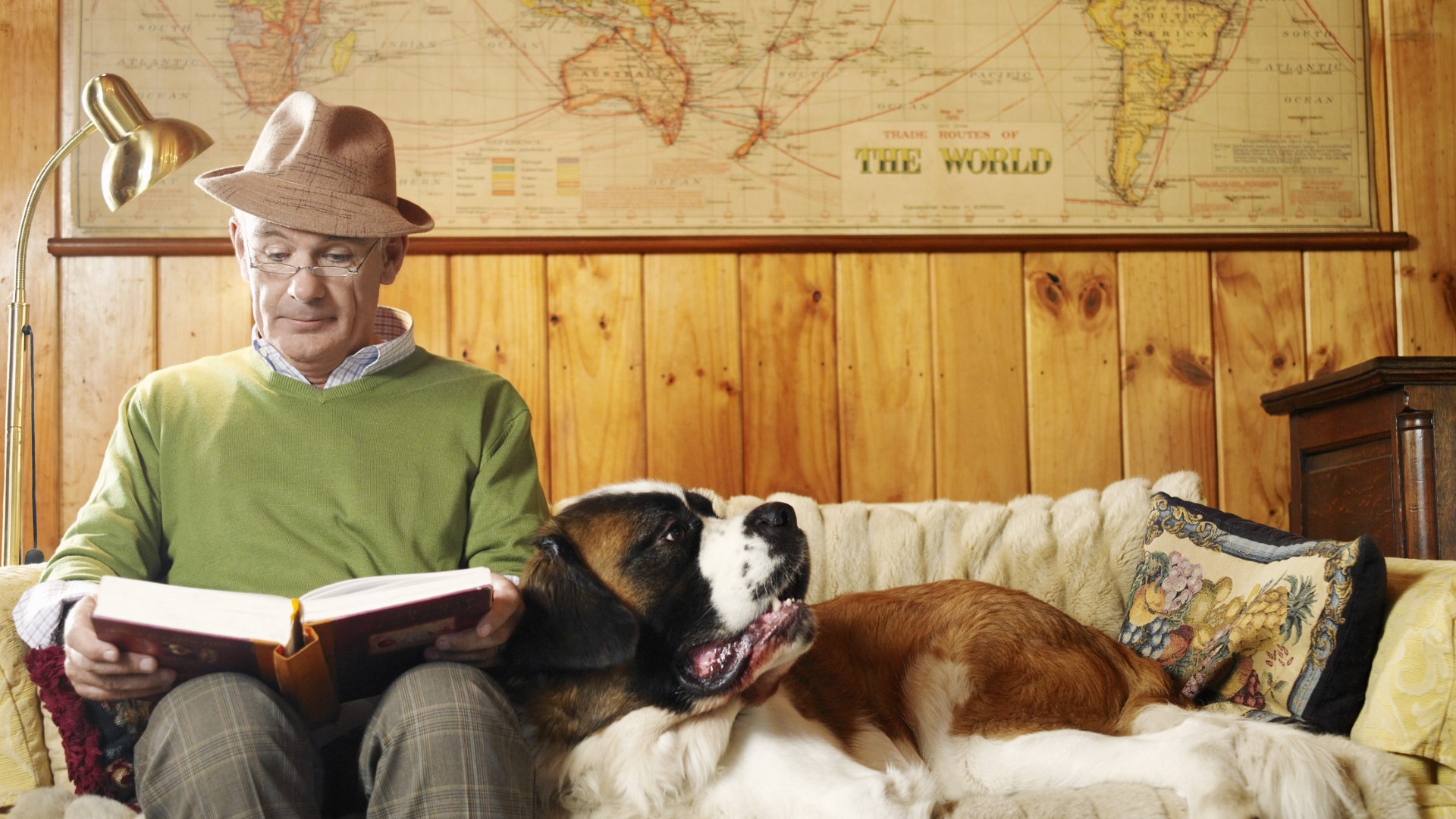
While some highly affectionate dogs can also be quite clingy, Saint Bernards are well-known for being a wonderful mix of affectionate and independent. They tend to enjoy spending time around their people, but this breed is also generally well-suited to snoozing or enjoying some of the best dog toys on their own.
Given their hundreds of years of history as search and rescue dogs, it makes sense that this breed tends toward a mixture of independence and an orientation to people.
18. Saint Bernards are gentle with other animals
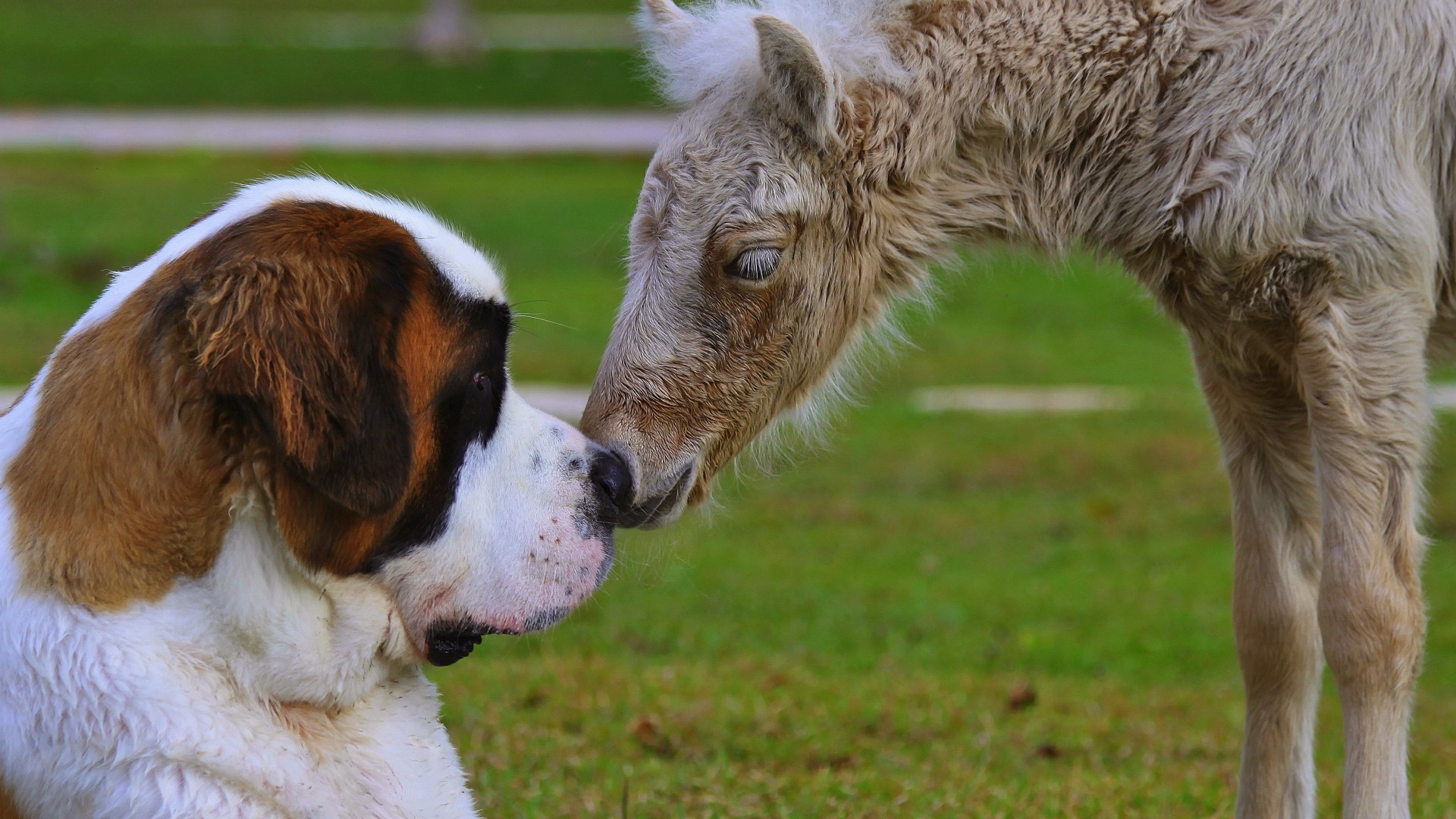
On the whole, Saint Bernards aren't known for having a strong prey or chase drive. They typically do quite well with other animals, although some pets may feel intimidated by their giant size. You might be wondering if they would be suitable livestock guardian dogs, given their size, hardiness, and tendency to be gentle with pets and livestock.
Ultimately, this breed isn't predisposed to actually guarding livestock, as much as they may be perfectly content to hang out in a field with them.
19. Saint Bernards love to have a lazy day
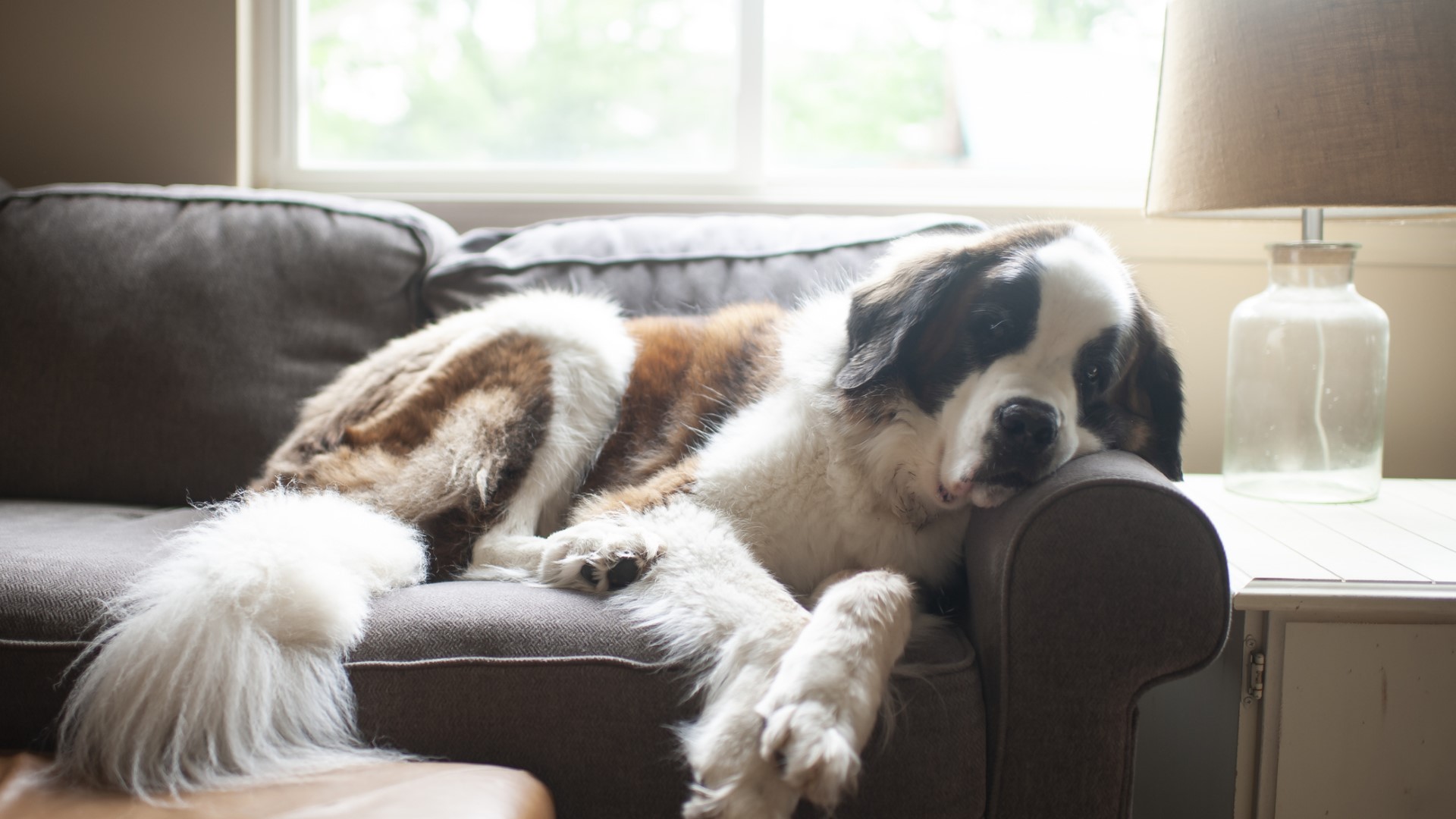
If you enjoy a slower-paced day and routine, a Saint Bernard would likely be a great canine companion for you. Their enthusiasm for relaxation is frequently reported by caregivers of this breed. Of course, during their puppyhood, they still tend to enjoy rambunctious play and general puppy mischief. Stocking up on some of the best durable dog toys will help keep your pup happy and out of trouble.
Once they reach adulthood, however, as one of the top five calm dog breeds, most Saint Bernards are quite content to spend the day kicking back and relaxing. Their gentle, laid-back nature makes them one of the best dogs for introverts. Of course, as with all pets, it's still crucial to ensure they have their social and enrichment needs consistently met.
20. Their loud bark can deter intruders

Even if they're not known for being rough and rowdy, these massive pooches can still let out a fierce bark when alarmed. If someone was planning on breaking into a home, they'd likely high tail it the other way upon hearing the thundering bark of a Saint Bernard.
To prevent this pooch from alarm barking at mundane or non-threatening things, it's important to help them feel safe and confident throughout their life, beginning with the early socialization period.
21. They're moderate exercisers
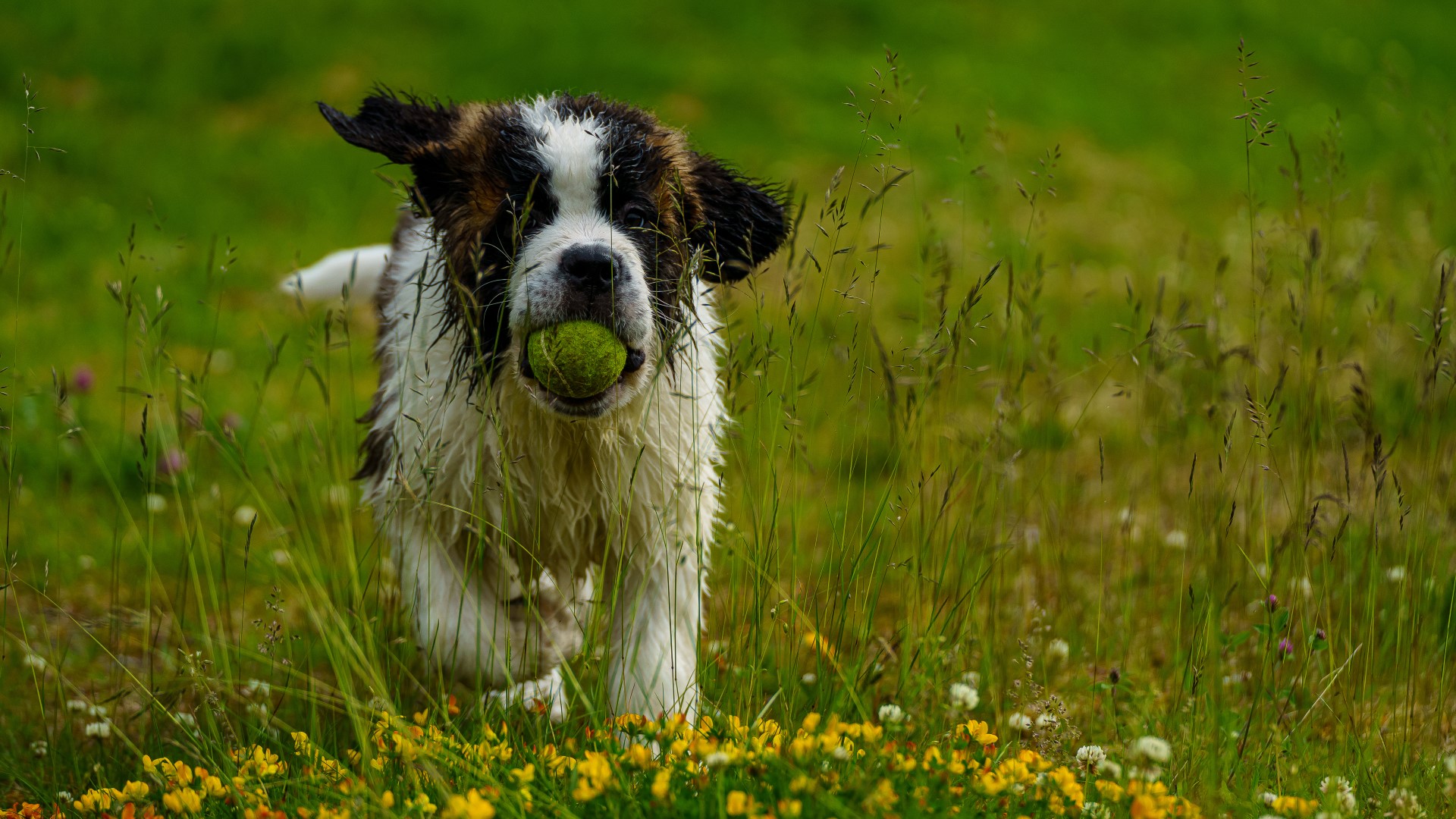
Some dogs, like those belonging to the herding breeds, require consistent high-energy exercise for the well-being of their mental and physical health. For some folks, this need aligns well with an athletic, on-the-go lifestyle. However, not everyone interested in adopting a dog can provide an elevated level of daily exercise.
For people with the space and interest in a giant breed and a desire for a lower energy routine, the Saint Bernard is a great option. They do still require exercise, but a nice, daily meandering walk or half-hour of moderate exercise per day is usually enough to keep this breed content.
22. They have the cutest mugs
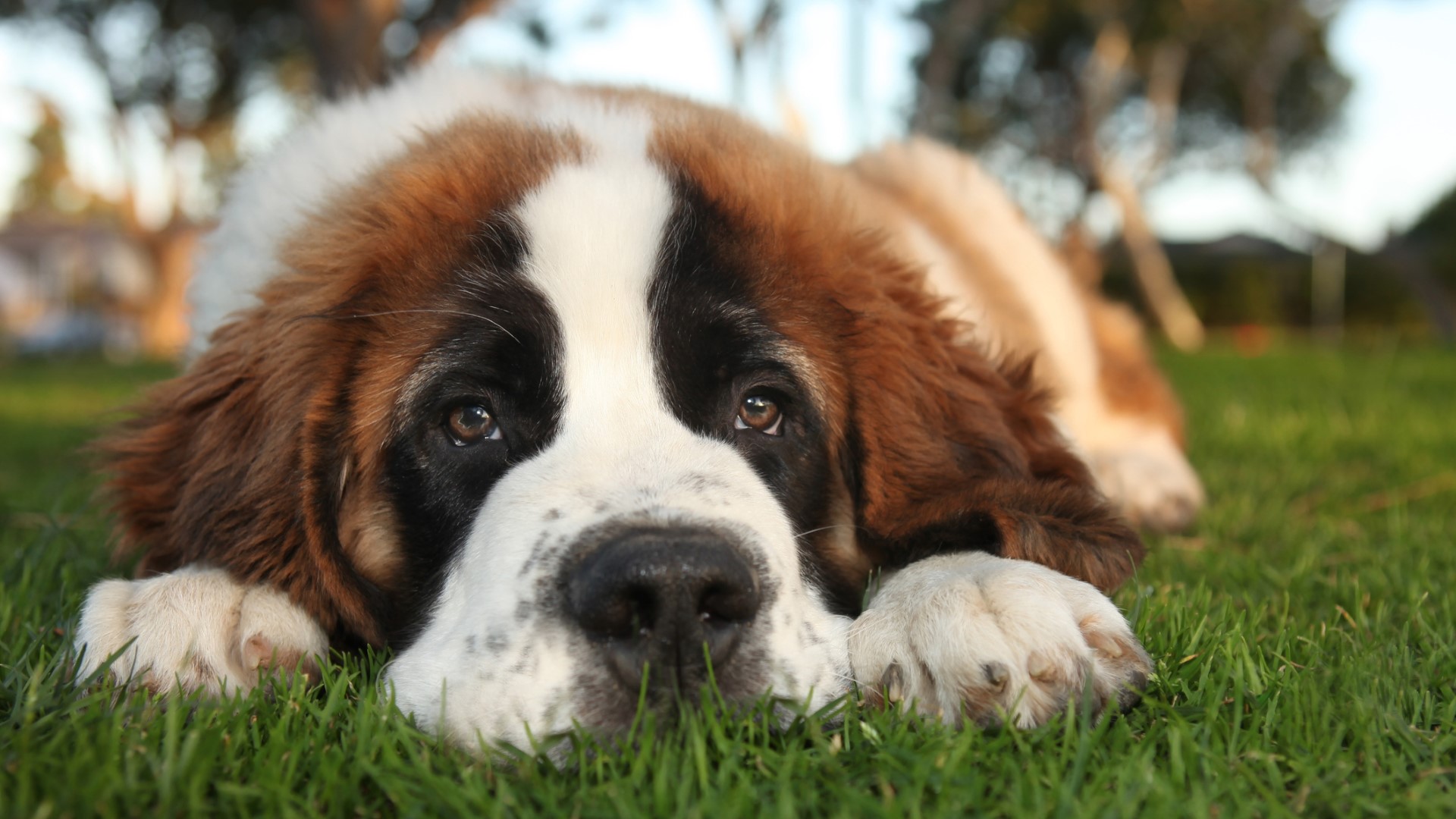
It’s hard to argue against Saint Bernards having one of the cutest faces in the game. Even with their giant, powerful heads, their expression conveys friendliness and bright intelligence. Their overall head and face are delightfully reminiscent of a giant teddy bear.
This friendly appearance is a part of their breed standard. According to the American Kennel Club's official breed standards, the Saint Bernard should have a “powerful head and most intelligent expression. In dogs with a dark mask, the expression appears more stern, but never ill-natured.”
23. Saint Bernards are amusing
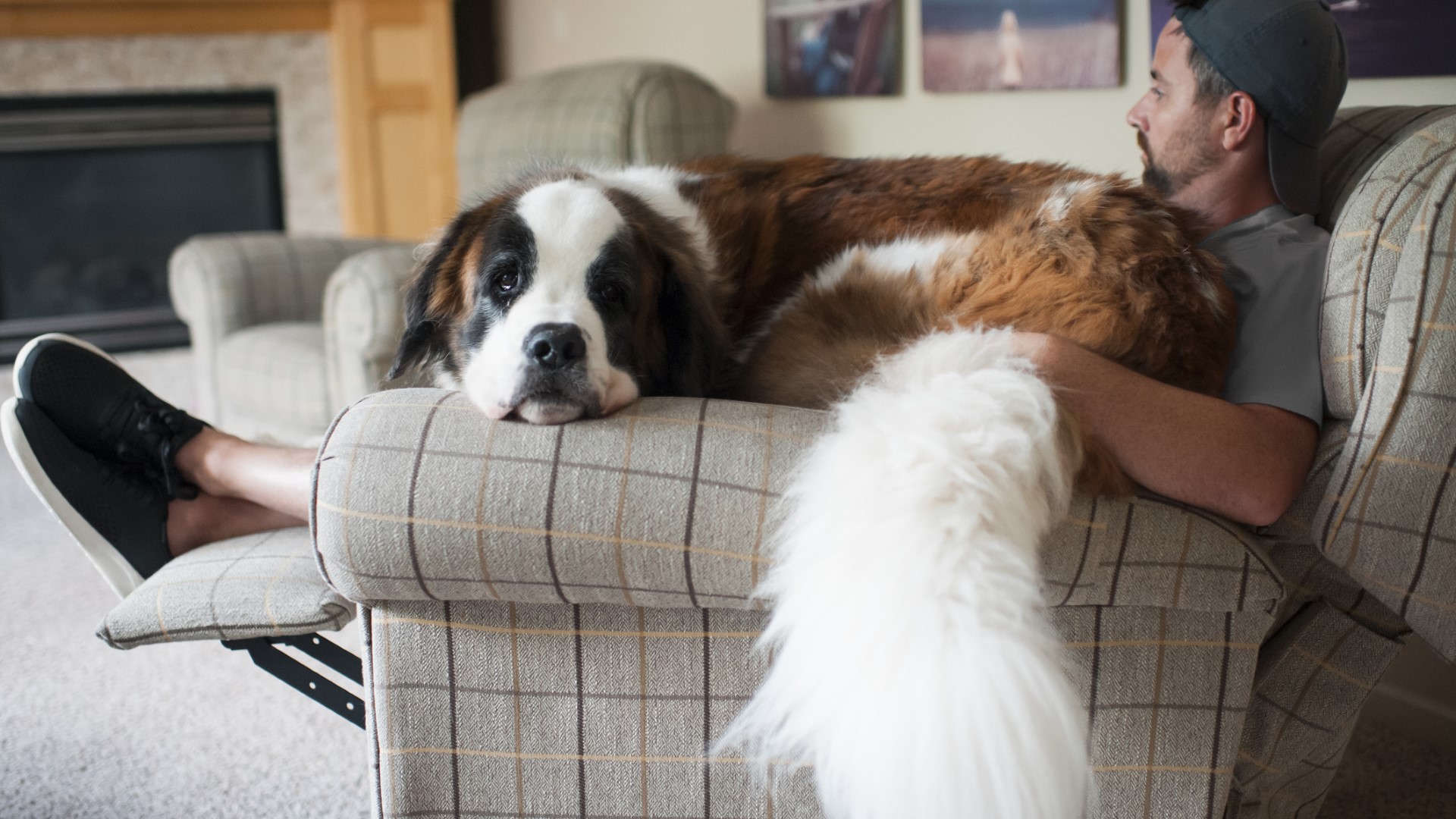
It’s no surprise that a Saint Bernard was the lovable star of eight feature films. These giant pooches are simply fun to watch. Saint Bernards have a disarming and heart-warmingly silly quality about them that contrasts entertainingly with their imposing size.
There’s something quite amusing about watching a cartoon-like critter the size of a miniature horse maneuver around your home. If you have the opportunity to raise a Saint Bernard from puppyhood, you’ll get to enjoy watching a 12-week-old puppy amble and frolic around in a 50-pound frame.
24. They have interesting myths in their breed history
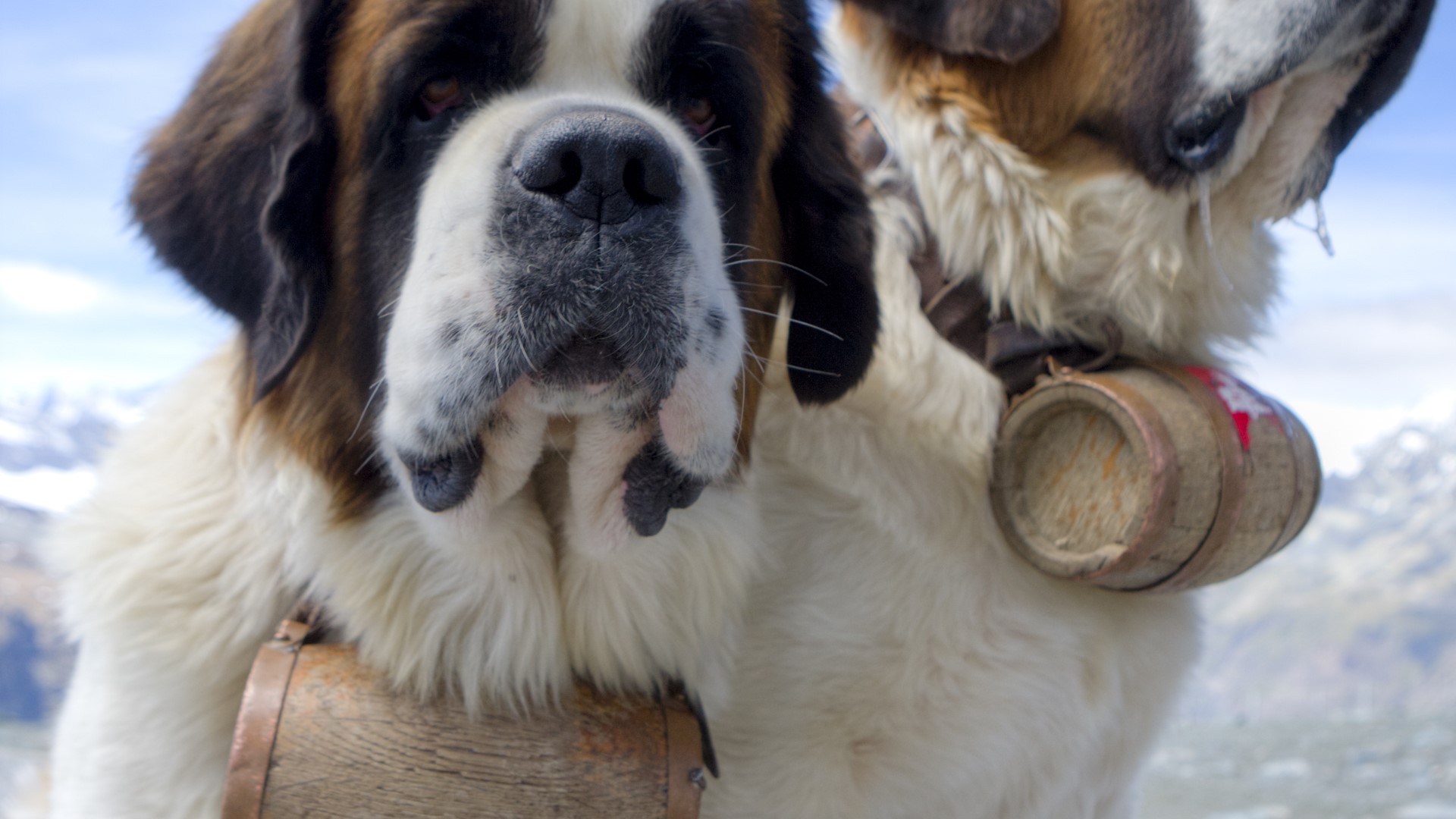
The history of the Saint Bernard is certainly shrouded in tall tales. One of the more entertaining myths originates from an early 19th-century painter and endures to this day. In 1820, a 17-year-old English painter named Edwin Henry Landseer produced Alpine Mastiffs Reanimating a Distressed Traveler. In the painting, two search and rescue Saint Bernards discover a fallen traveler, and one of the dogs has a small wooden barrel strapped around his neck.
Landseer claimed the barrel contained brandy to help warm the victim. Of course, while brandy does initially feel warming, alcohol actually lowers body temperature and is detrimental to a hypothermic person. There’s no evidence that the Saint Bernards of the Swiss Alps wore these barrels, but the myth persists to this day. You’ll often see modern portraits of Saint Bernards wearing prop barrels.
25. They're extremely observant

While they aren’t popular guard dogs, Saint Bernards are known for being acutely observant and watchful. According to the University of Chicago, the massive Molosser ancestors of these magnificent dogs were often used as watchdogs on farms by ancient Greeks and Romans. Some breed historians believe Saint Bernards are a mixture of Molossers, who traveled to the region with their Roman guardians, and unknown giant breed dogs of the Alpine valleys. A predisposition to being observant served the breed well in their development as search and rescue dogs along the Great Saint Bernard Pass.
26. Saint Bernards are photogenic

With their friendly expression, cartoon-like face, soulful eyes, and giant teddy bear aesthetic, Saint Bernards are extremely photogenic. These pooches certainly liven up any photoshoot with their grand appearance. Since they are amiable and patient, Saint Bernards are also often cooperative models, allowing amateur and professional photographers alike the chance to capture the perfect shot of these gentle pups.
If you’re planning on welcoming a Saint Bernard puppy into your home, you can experience the joy of photo-documenting the insane growth of your new best friend from puppy to adulthood. And of course, make sure to stock up on some of the best puppy treats when you welcome your new pal home.
27. They're adorably cartoon-like in appearance
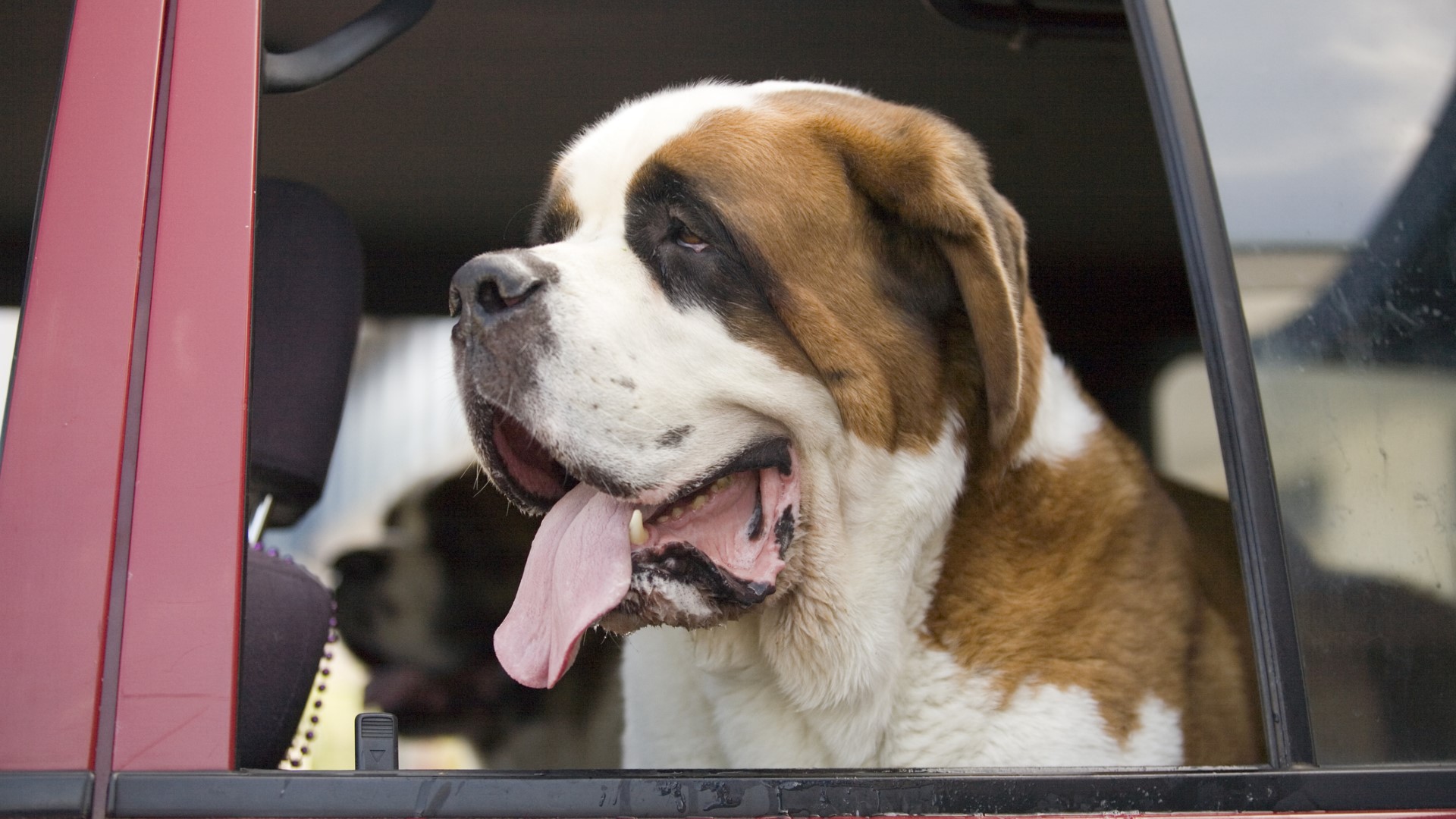
Saint Bernards are like a cherished cartoon character come to life. Indeed, Saint Bernards have been depicted in several cartoons, with the most widely known being Nana from Disney’s 1953 film Peter Pan. In the film, Nana is the Darling family’s nanny to their children. Nana has all of the most beloved characteristics of Saint Bernards. She’s loyal, enduringly sweet, and patient with children.
Of course, in real life, not every Saint Bernard fits this depiction. Socializing your dog properly from puppyhood is crucial to helping our dogs feel safe and comfortable as they navigate our human world.
28. Saint Bernards are typically patient with children
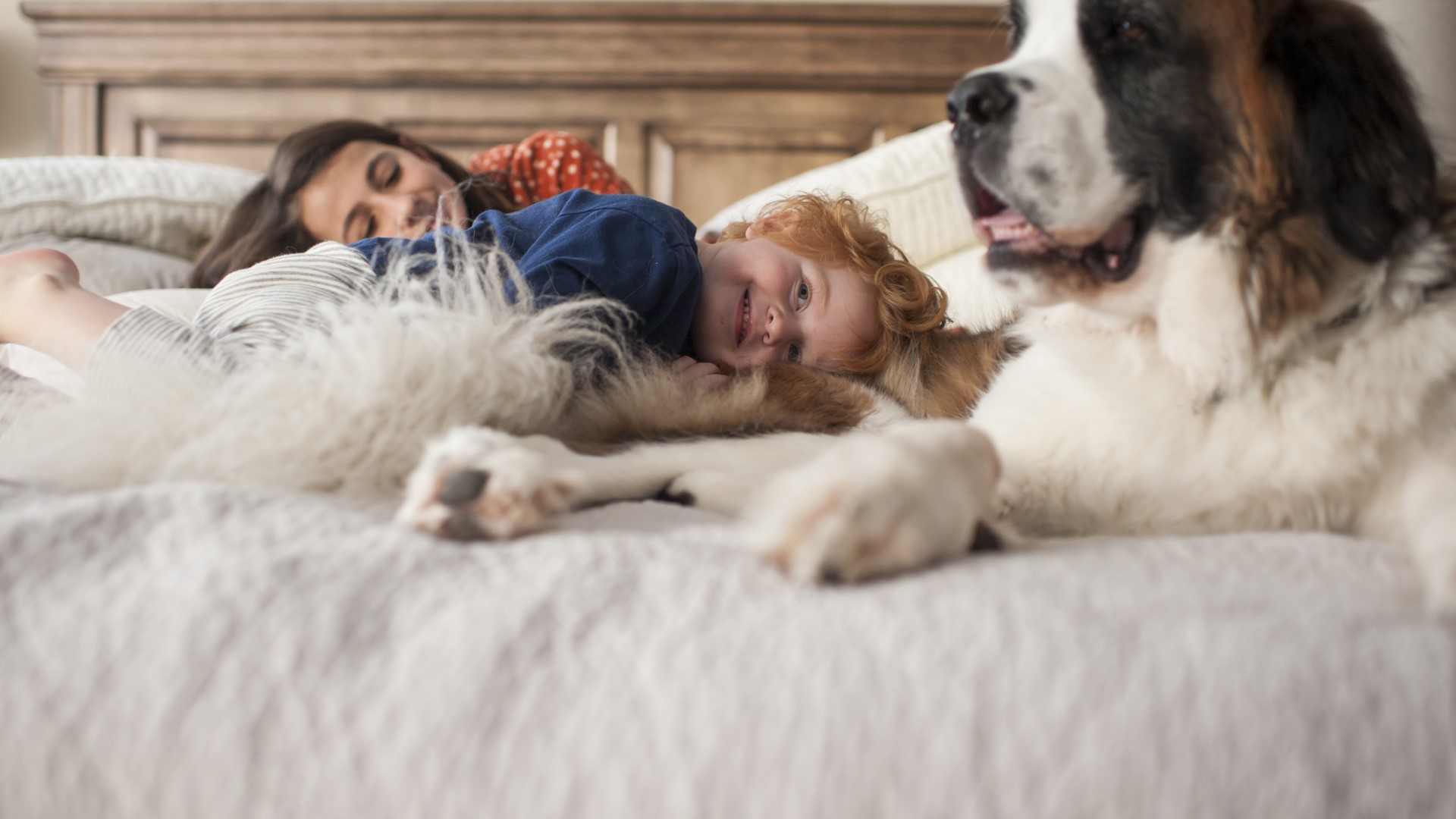
Perhaps one of their best qualities as a family pet is the Saint Bernard’s reputation for being patient and gentle with children. The sudden movements, loud noises, and lack of spatial awareness of children can be anxiety-inducing for many dogs. Some breeds are more predisposed to being wary of these behaviors than others. The Saint Bernard is one of the most well-known for feeling calm and safe around children, making them just one of the best large dog breeds for families.
However, their large size does mean they may accidentally knock over a small child, and ultimately, all interactions between young children and dogs should be supervised regardless of the breed.
29. They're loyal
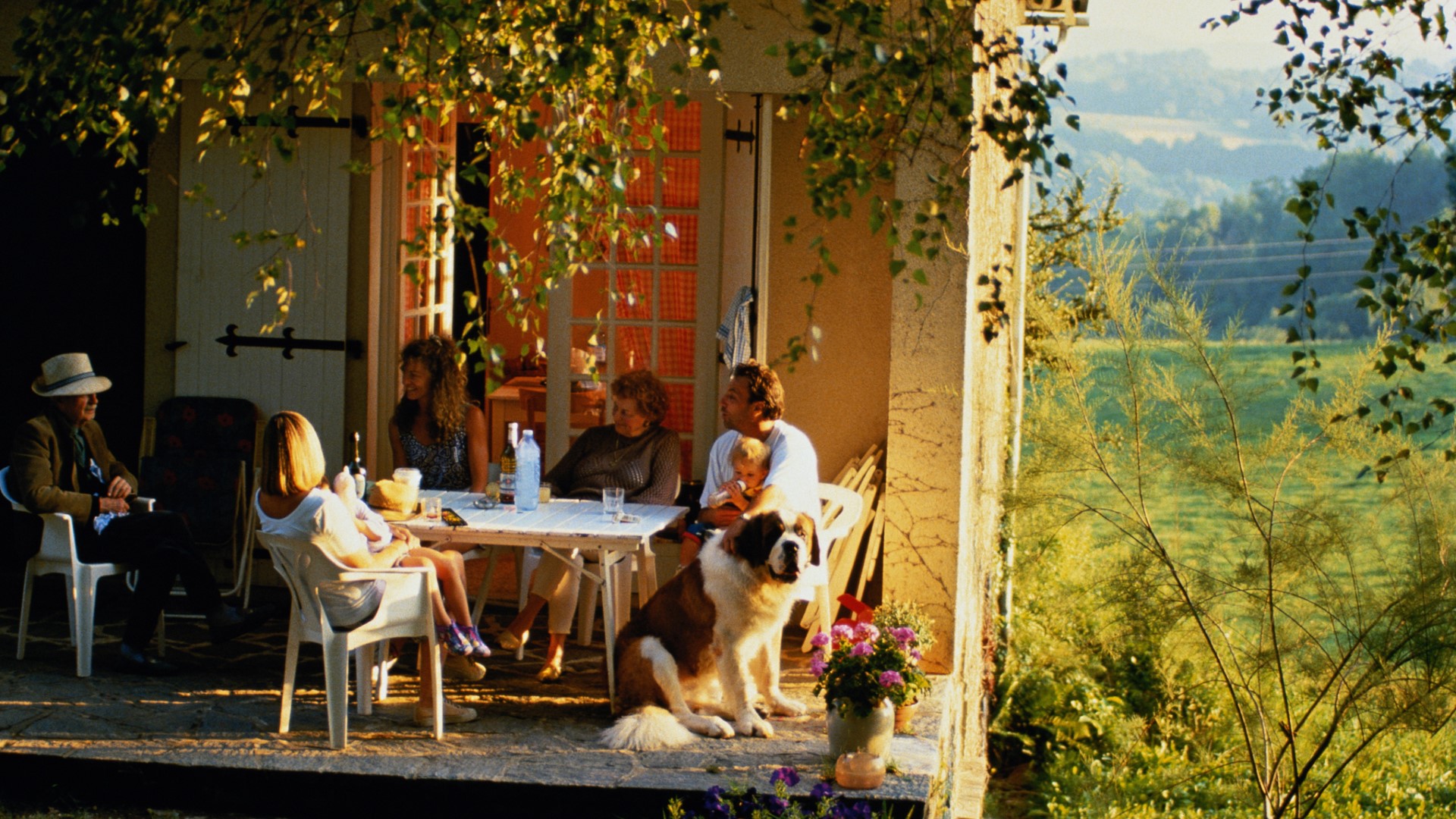
Saint Bernards are well-loved for their loyalty toward their family members. While they can be great with people in general, this breed tends to develop strong attachment bonds to their immediate human family. It’s common for these loving dogs to curl up with a sick family member, staying by their side until their health returns. They also don’t tend to have a strong desire to wander off on outings, as they’re mostly motivated to stay next to their people.
30. They're easily content
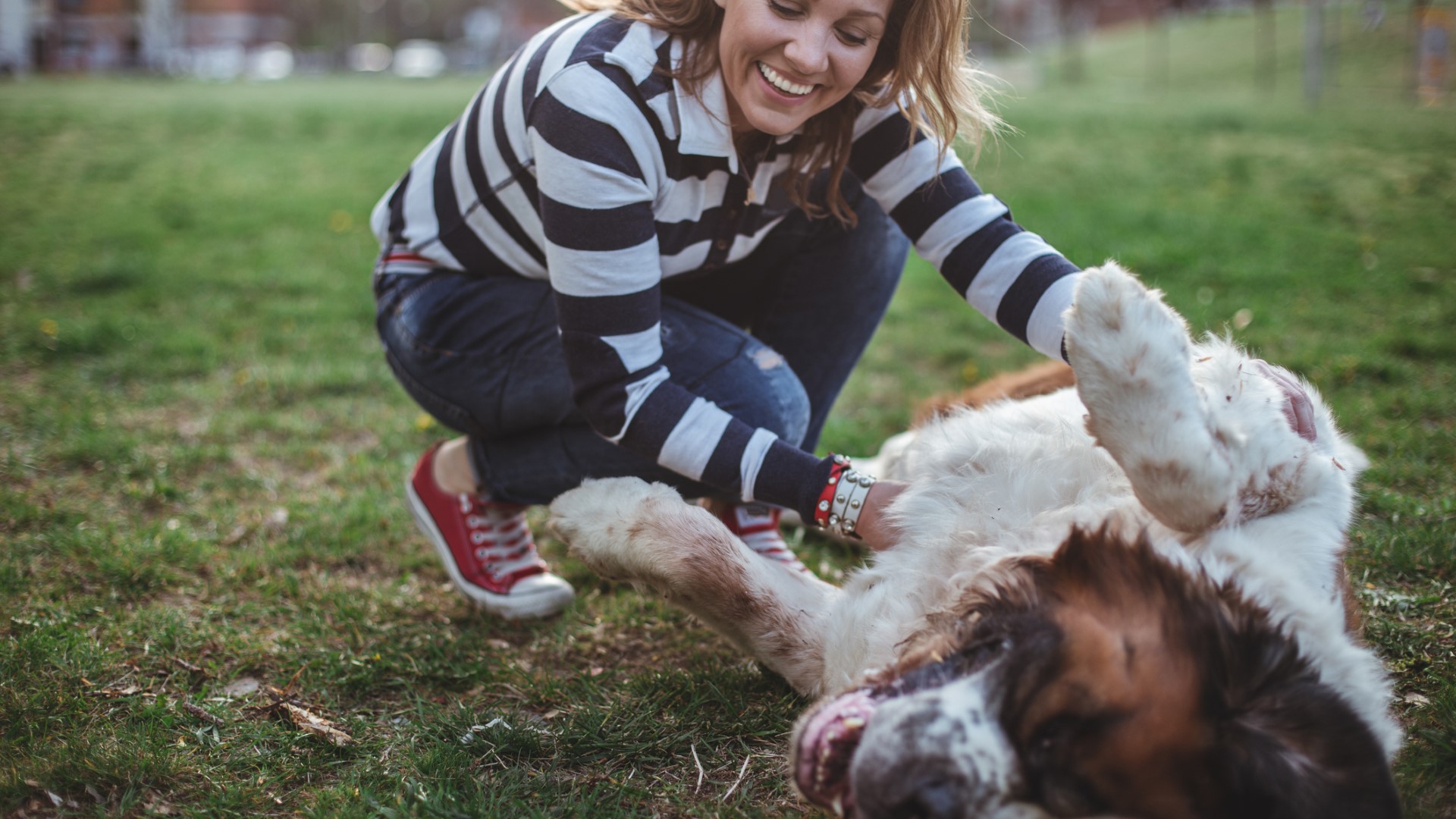
Some breeds of dogs, such as border collies, tend to require consistent mental stimulation to thrive. This is true of many herding breeds that can suffer quickly from boredom and lack of cognitive enrichment. Saint Bernards, while certainly intelligent, have less of a need for mental enrichment throughout the day.
While a non-working Australian cattle dog might need consistent access to some of the best dog puzzles and similar toys to feel content, a Saint Bernard is less likely to require the same level of enrichment.
31. They're a pooch and pillow combo
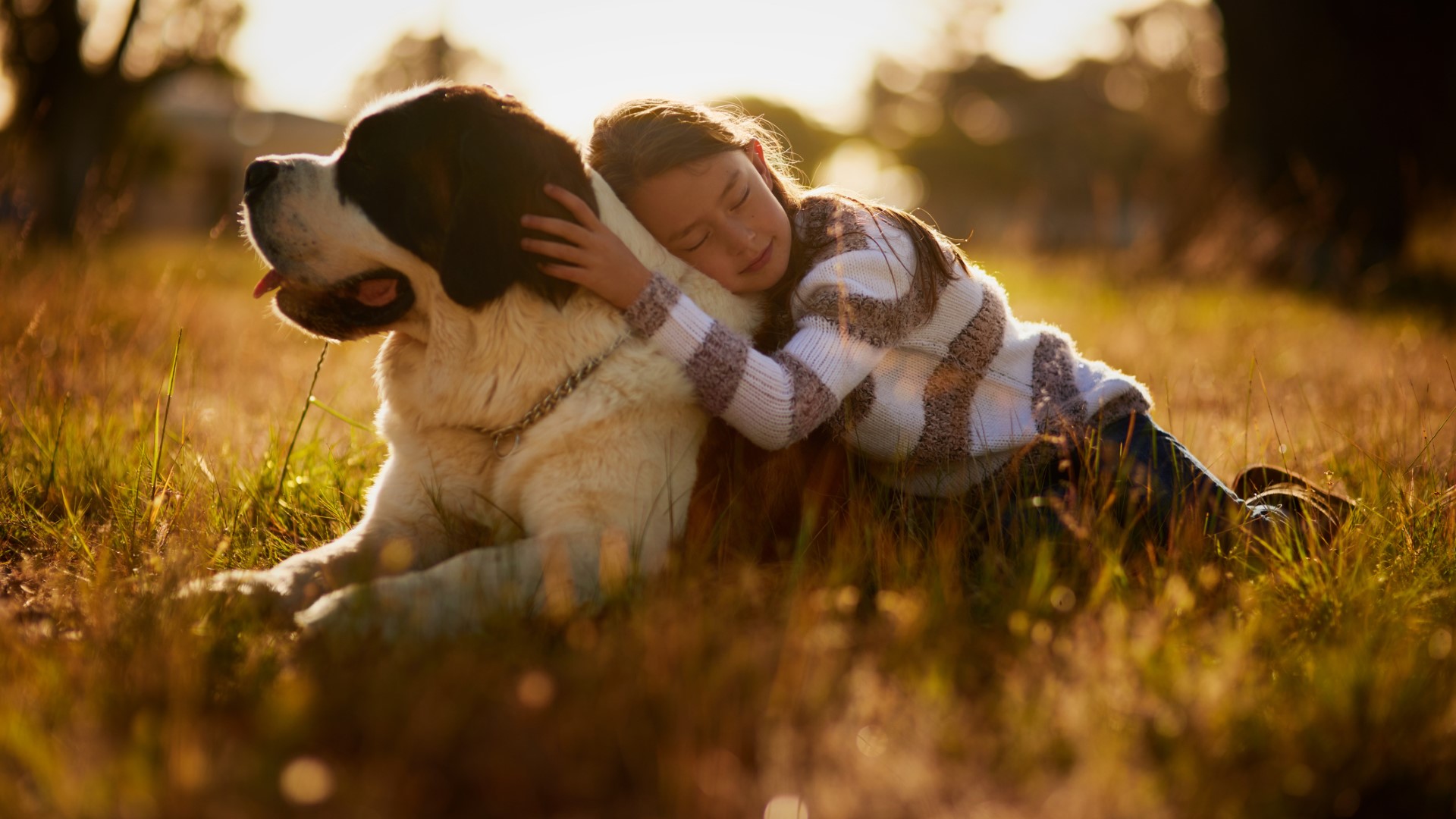
Understandably, not all dogs enjoy people laying their heads on them, but some don’t mind or actually enjoy the closeness with their person. In general, the Saint Bernard is more likely to welcome this type of interaction than breeds that are smaller-framed, and less known for their docile and people-oriented traits. If you have a Saint Bernard who’s agreeable to being a pooch and fluffy pillow combo, you’ve definitely lucked out.
32. Saint Bernards are fairly quiet

While the bark of a Saint Bernard is thunderous, they are not known as a particularly vocal breed. Some pups express their positive and negative emotions with a range of vocalizations. Huskies, for example, are famous for their amusing vocal antics. In contrast, the Saint Bernard tends to be quieter and less reactive to their environment. This is especially true if they’re well-socialized. When a well-adjusted Saint Bernard alarm barks, there’s usually a readily identifiable reason.







